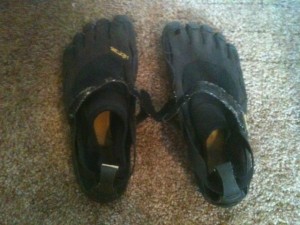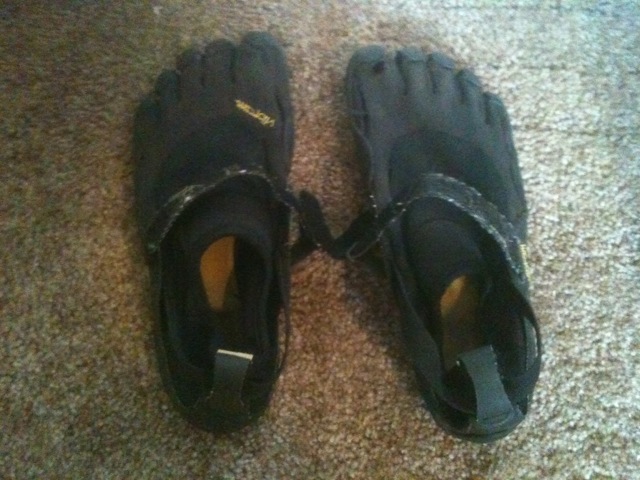Yesterday I ran in the Wharf 2 Wharf race that is held annually here. It’s a 6 mile or 10K race from the wharf by the Boardwalk in downtown Santa Cruz to the wharf in Capitola (hence the name).
I’m not a runner. I know there are much better ways to get in shape, not to mention less boring, then to run miles upon miles. It’s fine if that’s something that you enjoy doing. If that’s you, all the more power to you in doing it.
But the majority of people in the world think running a marathon is the epitome of health and fitness. That’s where I have some issue. Anyway…
My brothers were doing it (one of them IS a runner) and they convinced me to join them. In my regular training I don’t run much. In the past two months I did a little running on the trails near my house twice. Probably a total of 3 or 4 miles. Not really steady pace but sprints and walking. Basically some form of intervals. That’s it as far as what I did to specifically prepare for this event.
But I’m almost always up for a challenge. I knew I wouldn’t even come close to my previous best time of 38:Something but was there just to have some fun.
Going Barefoot…sort of
 And to add to the challenge I ran the race in my Vibram’s. (I have three pairs of shoes – my Vibram’s, my regular everyday Van’s and a pair of dress shoes so I didn’t have much choice.)
And to add to the challenge I ran the race in my Vibram’s. (I have three pairs of shoes – my Vibram’s, my regular everyday Van’s and a pair of dress shoes so I didn’t have much choice.)
For those who have not heard about these shoes or barefoot running I’ll give a short recap. The human body is not meant to strike the ground with the heels on each step. With over-engineered running shoes and their thick cushions they allow you to do just this. Instead running is meant to be done on the balls of the feet.
Heel striking results in a complete biomechanical change to the way running should be done. And this results in pain in the low back and/or knees of many people.
Vibram’s are made to mimic being barefoot while still giving you some protection with a thin rubber sole.
Let’s get to the race. With over 15000 people running this race it’s no easy start unless you’re at the very start. For me the first mile was spent dipping and weaving through people trying to get ahead.
By the second mile the area had opened up and I was free to run at my own pace.
Running Into Problems
On the third mile I ran (no pun intended) into problems. Without the prior training my feet were not prepared for this run. Even if I had done more, running on trails is different then running on asphalt.
The pad right below my big toe was getting sore. As the race went on I figured blisters would be forming.
And my calves were getting fatigued. Staying on your toes does take muscle. Once again the lack of preparedness stopped me from going.
These two things combined meant I had to ease up on the running on the toes. My run became flat footed. And as I didn’t have much cushion this caused a dramatic slow in my pace especially in miles 5 and 6. More of a shuffle than a run.
I kept trying to pick it up but every time I tried I just suffered more. I decided I’d just finish the race without stopping, even if I was only moving at a slow jog. I did and came in at the finish line at 50:50, my slowest race time ever.
I was planning on going all out on one of the miles to see how fast I could do it, but was held back. Because I ended up going so slow I didn’t even come close to testing my conditioning and wasn’t even tired after the race.
My takeaways:
- Barefoot running is great. It works more musculature and is in general better for your body. I recommend you trying it if you haven’t.
- Barefoot running is also self-correcting. If you can’t do it correctly anymore its time to stop running (of course unless you happen to be one third of the way in a race).
- Going all out in a race without the preparation is a good way to hurt yourself. Part of me was worried it would end up worse than it did.
- Sometimes its fun to test your mental toughness. Sometimes its stupid. Often times its both.
Writing this the day after I’m happy to report no blisters. Just a little soreness in the feet and a lot of soreness in the calves and ankles.
And in case you were wondering I did see about five other people in the race running in Vibram’s as well. Didn’t get to compare experiences with them though.
My brother, the one that does run, decided to go actually barefoot taking of his shoes and socks for the last mile. And he says next year he’ll go completely barefoot for the entire thing. Maybe I’ll join him…Maybe I won’t…
In strength,
Logan Christopher


Comments
I can do barefoot sprinting on grass. Ultimate Frisbee on the lacrosse field at the local university. But running miles on the street I would be afraid of hitting glass or a nail or something. Guess that’s what the Vibrams are for.
A good exercise for training to run using the Pose Method (balls of feet, minimal contact time) is jump rope. Still working on proficiency with that, but it has very similar motion, use of stored energy, landing point directly underneath, etc. Great for calf muscle endurance, cuz once that goes, the form completely degrades. I think you’re right. Go as far as you can in “good form” (I know in the past you’ve debated what that really means), but when the form starts to go, it’s time to stop running for the session. But that’s what swings, snatches, and ropes are for, right? Like you said, there are much better ways of achieving greater endurance.
@Scott Moehring: I haven’t used a jump rope recently but that sounds like a good idea if I wanted to work on this more. The truth is I probably won’t run again for another month or two. Lots of snatches instead. 🙂
Im thinking of trying a 5k this weekend. Ive run once in the last two months.
My goal is under 20 minutes…..and also under 25
lol
@Ross: If you do want to hit a good time might I suggest a short run today or tomorrow as a little bit of practice. Or just go out and do it like I did. Either way best of luck.
I have also recently become a fan of barefoot running but am awaiting my vibrams arrival in the mail. I have stopped running with my Nikes Air max because running barefoot makes total sense. I have substituted running in Converses old style high tops to mimic the lack of heel and cushion somewhat but am eagerly anticipating my Vibrams to run in. I am a once a week, sometimes twice/weekly runner choosing Kettlebelling as a way to maintain and become fit but i like to supplement with running. man was born to run-for food, spirituality and psychological health. More power to you for your race!
@Brian: I agree. Man should be able to run well at all times. Though at this time I don’t do it regularly I always find some way to make sure I keep efficient at the movement at least once in a while. Plus I think with regular barefoot running many people would find some big benefits.
Logan,
Just to clarify about the Vibrams so they aren’t used incorrectly ( I work at a running store, have podiatrist on staff and work with many runners and have logged 85,000 plus miles -plus KBell train). The idea is to use them gradually -, especially if you’re coming from support shoes! Think of them as a “training tool” for the feet. Do warm-up, cool-downs, for at the gym so your feet develop the strength to handle the workload, particularly the arch area. Yes, Vibrams quickly force you to land correctly and improve your stride..Give your feet, your gastrocs, Achilles time to acclimate: it will take time to run 3M..Don’t forget, you’re fairly lean and by natural selection runners tend to be lightweight and efficient. What the beefy running shoes have done is enable the heavier, non-runner body types to take up running: without the proper support shoes they wouldn’t be able to participate! so Vibrams will work for some and are not for everyone.
@Kees Tuinzing: Great tips. Accilimation is key and something I’ll be doing if I plan on running barefoot or vibrams again in the future.